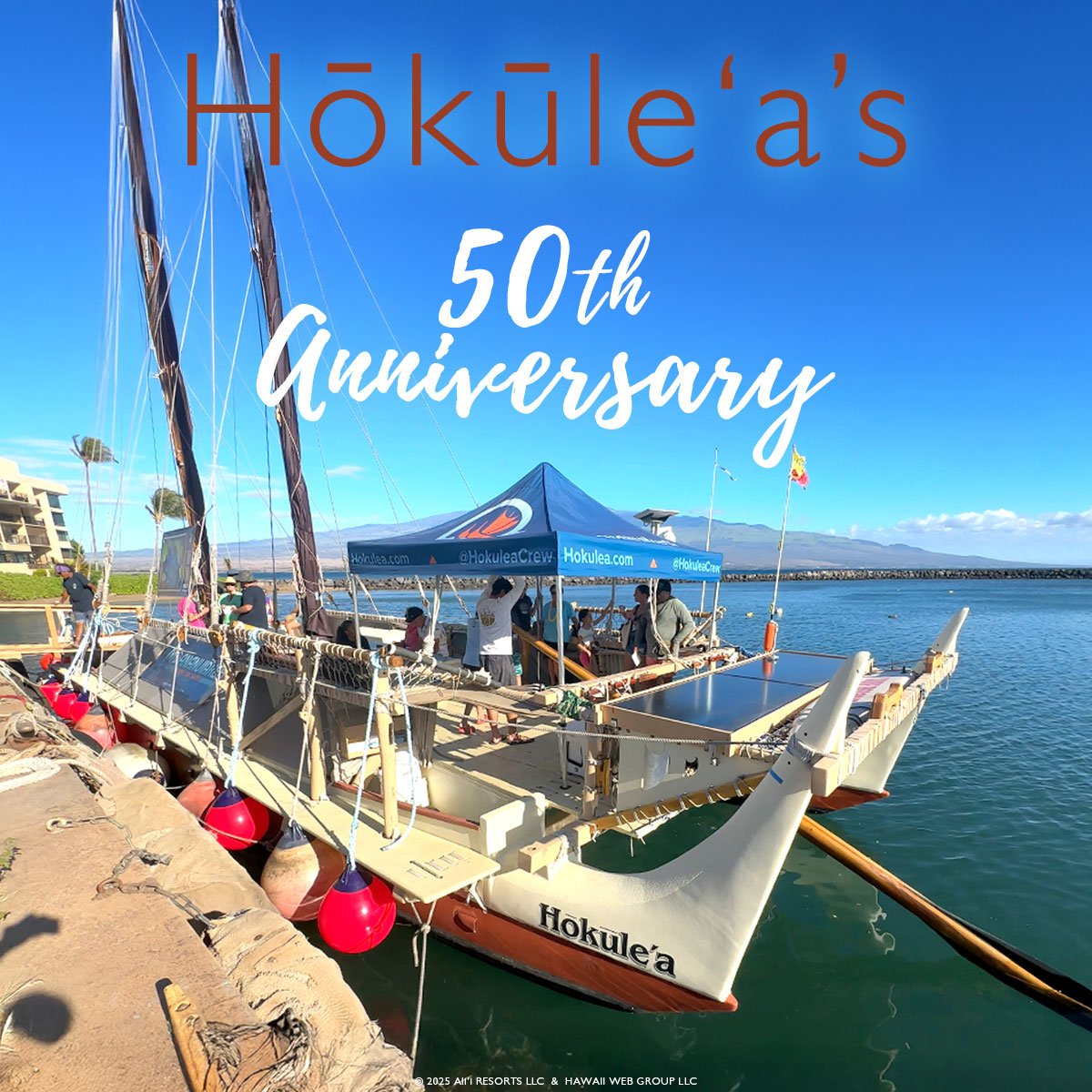A Legacy of Navigation and Cultural Pride
We were honored to have a tour of the Hōkūleʻa recently in Ma’alaea Harbor. We had a great time learning about the history as well as the day to day onboard.

This year marks 50 years since Hōkūleʻa first launch from the shores of Kualoa. Born from a vision to revive traditional Polynesian voyaging, the iconic double-hulled canoe has become a global symbol of cultural resilience, ocean stewardship, and wayfinding without instruments.
To honor this milestone, thousands gathered where her journey began. The ceremony welcomed past and present crew members, cultural leaders, and supporters who celebrated with chants, protocol, and deep reflection. The celebration continued with a gala in Honolulu, sharing stories from five decades of voyages and raising funds to support future missions.
Public canoe tours and special events followed, including a gathering at Bishop Museum that highlighted Hōkūleʻa’s role in restoring pride and knowledge in Pacific navigation. Commemorative gear, like artful bucket hats and limited-edition shirts, was also released, tying the legacy to wearable symbols of connection.
This anniversary wasn’t just a look back, it was a rallying cry to continue sailing with purpose: to protect our oceans, honor ancestral knowledge, and carry the light of Hōkūleʻa forward for the next generation.

Specifications & Design
Dimensions & Capacity:
Overall Length: Approximately 64 feet 9 inches
Beam (Width): Around 19 feet 8 inches
Draft: Approximately 2 feet 6 inches
Unladen Weight: About 7 tons
Fully Loaded Displacement: Approximately 12.5 tons
Carrying Capacity: Up to 5.5 tons
Crew Accommodation: Sleeps 10 crew members, with 5 in each hull


Sailing Features:
Mast Height: Approximately 31 feet 2 inches
Spar Height: Around 41 feet 5 inches
Sail Area: Approximately 540 square feet
Steering Mechanism: Operated using long steering paddles
Propulsion: No auxiliary motor; relies solely on wind and manual navigation


Construction Materials:
Hull Composition: Constructed using marine-grade plywood, fiberglass, and resin
Masts: Crafted from wood
Rigging: Features both crab claw and Marconi-style sails


Design & Maintenance:
Hōkūleʻa’s design emphasizes modularity, allowing for efficient assembly, disassembly, and maintenance. Key components such as the crossbeams (iako), deck covers (pola), and masts are secured using traditional lashing techniques. This method not only ensures structural integrity but also facilitates quick replacement of parts when necessary.


Sustainability & Functionality:
The canoe is equipped with solar panels to power essential navigation and communication equipment. Provisions are meticulously planned, with storage compartments designed to hold supplies for extended voyages, emphasizing self-sufficiency and environmental stewardship.



Some Fun Facts

- Hōkūleʻa is a double-hulled voyaging canoe (waʻa kaulua) built in Honolulu and launched on March 8, 1975. This marks its 50 anniversary!
- Launched in 2023, the Moananuiākea Voyage is a four-year circumnavigation of the Pacific, aiming to engage with 100 Indigenous communities and promote ocean conservation.
- The canoe measures 62 feet in length and 20 feet in width. Hōkūleʻa’s design emphasizes modularity, allowing for efficient assembly, disassembly, and maintenance. Key components such as the crossbeams (iako), deck covers (pola), and masts are secured using traditional lashing techniques.
- The canoe is equipped with solar panels to power essential navigation and communication equipment.
- Crew sleep in enclosed hull spaces on mats, rotating shifts. Supplies are stored in waterproof containers, packed low and secure for balance and easy access.
- In 1973, artist Herb Kawainui Kāne, anthropologist Ben Finney, and sailor Charles Tommy Holmes established the Polynesian Voyaging Society to revive and perpetuate traditional Polynesian navigation and voyaging techniques.
- In 1976, Hōkūleʻa embarked on a landmark voyage from Hawaiʻi to Tahiti, covering approximately 2,500 miles without modern navigational instruments.
- The successful 1976 voyage challenged prevailing theories that Polynesians settled the Pacific by accident, instead highlighting intentional navigation.
- Trained by Mau Piailug, Nainoa Thompson became the first Native Hawaiian in centuries to navigate to Tahiti without instruments in 1980.
- Hōkūleʻa has sailed over 140,000 nautical miles, visiting numerous countries and fostering cross-cultural exchanges.
- Hōkūleʻa’s journeys have played a pivotal role in the Hawaiian Renaissance, fostering a resurgence in Hawaiian language, culture, and identity.







